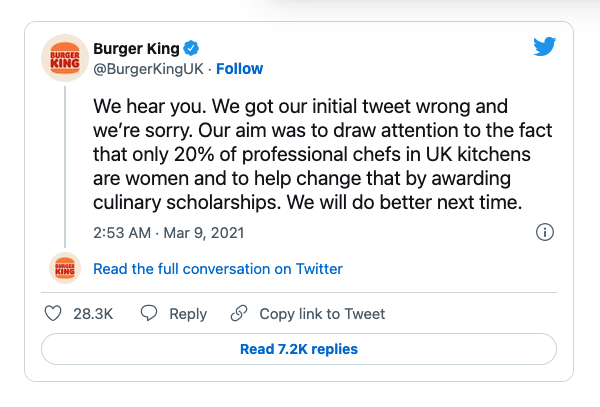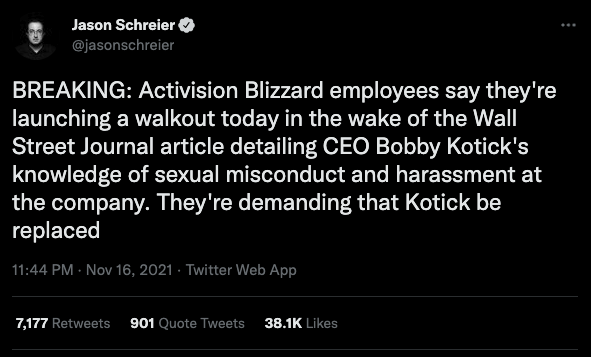As much as we’d all like to be crisis-free, it’s an idealistic concept. A crisis is inevitable in business, and its occurrence can significantly impact a company's reputation and operations.
In such situations, companies are at great risk of losing control over the negative news that spreads rapidly, especially in today's digital age. The only chance to recover from a public relations (PR) crisis is to actively apply crisis management best practices.
Using tools like press release distribution software can be essential in managing communications effectively during a crisis, ensuring that accurate information reaches your audience promptly. Brands can address and repair bad customer experiences and crisis-causing news with honesty and transparency, which helps rebuild trust.
What is a PR crisis?
A PR crisis is an unexpected event that negatively impacts a company’s reputation or operations. It can stem from various issues, such as customer complaints, negative reactions on social media, product defects, legal problems, or media scandals. Effectively addressing and managing these situations is essential for maintaining a positive reputation
A PR problem occurs when a person or company makes a mistake or gets caught in something embarrassing or controversial, which threatens their reputation or damages how the public views them.
For example, a brand might post an insensitive tweet, or a celebrity could say something offensive in an interview, sparking backlash. It’s basically a reputation headache that needs fixing fast!
However, if you choose to “wait and see,” your client and brand will unlikely see positive results, as inaction can lead to further speculation and damage. Proactively managing a crisis mitigates the immediate fallout and can set the stage for a stronger relationship with your audience in the long run.
So, what are the best practices for crisis management? How can you effectively integrate them into your public relations strategy using the right tools? Let’s explore these essential elements together.
Elements that can affect a brand’s reputation
A company’s reputation can change at the drop of a hat. Businesses are often adept at navigating the media and manufacturing a positive perception. However, there are many external variables that can drastically affect a company’s public standing.
Here are a few elements that can cause a PR crisis:
Social media
In an age where anyone can voice their opinion with a quick message, post, or tweet, a brand’s reputation can rapidly change. Companies of every variety are now beholden to consumers who swiftly change their opinions of a brand based on marketing campaigns, political stances, or recent news events. More often than not, these perceptions are influenced for the worse and significantly impact a brand’s ability to succeed.
The rise of social media has provided a communication platform for a new generation of consumers. These consumers now have the ability to broadcast opinions and buying habits on global platforms.
Social media also allows for news stories to travel rapidly to every corner of the globe. From a PR standpoint, this is an encouraging way to spread a brand’s message quickly and effectively to target audiences. However, it can also be the quickest way for a brand's reputation to plummet in consumers’ eyes.
Social media has dramatically shortened the time organizations have to respond to reputation issues. At the heart of good public relations management is getting out in front of good events quickly and in front of bad events even faster.
Media coverage
Because consumers have a bad perception of companies that receive negative media coverage, PR teams must be vigilant in promoting consistent positive messaging that contains a brand's voice and values. A consumer’s perception of a brand also affects the likelihood of purchasing that company’s products.
Consumers may not be aware of a company’s tarnished reputation when they're just making a small, low-cost purchase. In such cases, your business might be able to get away with negative coverage. With large purchases, however, the consumer is more likely to do thorough research on a brand, and your reputation could be a large factor influencing their purchase decision.
Media relations
A media relations team monitors any looming crises and works swiftly to combat them or, at the very best, control them. When negative news infiltrates the media, it tends to snowball and get on everyone’s radar in a short period of time. Having contact with media outlets or newsrooms helps companies navigate through the crisis.
Every organization, regardless of size or budget, should practice media relations. Building connections with journalists isn’t just impactful; it also comes at no additional cost. Your brand reputation will improve if you continuously interact with and build relationships with journalists in a positive way.
By being on a first-name basis with a reporter, you can get insight into what they plan to cover, access their editorial calendar, and inadvertently become the first person they call when they need a story on a topic your business is well-equipped to answer. Additionally, this enables your business to constantly be featured in stories that depict the company in a good light.
Media monitoring
Media monitoring helps organizations stay abreast of potential PR crises that come their way. And one of the most telltale signs of a potential crisis is when an immediate competitor goes through a PR disaster.
Earthquakes usually occur before a tsunami. People living on coastlines are always on guard and prepared to evacuate before major damage occurs. In this case, your competitor's crisis is the metaphorical earthquake.
For instance, if there are reports of a renowned makeup brand adding toxic substances to their products, other cosmetic companies should work on campaigns that emphasize how their products are manufactured. This will help them avoid public outrage and divert attention toward others in the beauty industry.
Want to learn more about Public Relations (PR) Software? Explore Public Relations (PR) products.
PR crisis examples
Looking around, you will surely find a PR disaster erupting globally.
They say the best lessons are learned from someone else’s mistakes. Let’s look at some examples of major PR crises that rocked the boat in 2021.
Burger King
On International Women’s Day, Burger King UK tried to use shock factor to convey their message of support. Unfortunately, they didn’t get the reaction they were hoping for.
 Source: Adage
Source: Adage
Their first tweet went viral for all the wrong reasons, with people completely ignoring their reply to the controversial tweet. This is a case of good intentions and bad execution.
Burger King quickly deleted its controversial tweet and released a statement saying, “We are committed to helping women break through a male-dominated culinary culture in the world’s fine-dining restaurants—and sometimes that requires drawing attention to the problem we’re trying to help fix.
Today, our tweet in the UK was designed to draw attention to the fact that only a small percentage of chefs and head chefs are women. It was our mistake not to include the full explanation in our initial tweet. We have adjusted our activity moving forward because we’re sure that when people read the entirety of our commitment, they will share our belief in this important opportunity."
Sometimes, we say or do something without thinking it through to make some noise. Burger King’s tweet is a classic example of trying to grab attention but hurting yourself in the process.
An important point to note from this example is that a swift response can help repair some damage. Burger King’s statement sounds apologetic and gives the impression that they’ve learned from their mistakes—something Activision Blizzard struggled to do with their PR crisis.
Activision Blizzard
Activision Blizzard made a name for itself in the gaming industry. These days, however, the brand is more synonymous with PR crises than its illustrious gaming history.
In July 2021, the California Department of Fair Employment and Housing (DFEH) filed a lawsuit against Activision Blizzard Incorporated, alleging discrimination against women through intense sexual harassment, unfair pay, and retaliation.
The company’s PR response was lackluster at best and damaging at worst. It claimed that the allegations were untrue and fabricated. The CEO, Bobby Kotick, failed to address the issues or announce the steps they’d take to improve the situation.
Since then, Activision Blizzard has been hit with numerous complaints, with employees threatening a walkout after a Wall Street Journal article revealed that the CEO was well aware of the sexual misconduct that took place and turned a blind eye.
 Source: Twitter
Source: Twitter
Activision Blizzard’s stocks took a sharp hit after the crisis. In just six months, their stocks have declined from almost $100 to $63.50 and only continue to dip.
What to do when a PR crisis hits
More often than not, big brands face PR nightmares and need to tap into their crisis communication plans.
When we think about a PR disaster, we usually think about professionals who manage a brand’s reputation. But there are also professionals who handle personal brands and celebrities, as well as internal PR teams. Regardless, all crises follow the same steps for complete recovery.
Crisis communication is the reaction of public relations professionals to protect a brand or client. Companies are responsible for how they react and respond in the height of a crisis. Businesses should be able to anticipate people's reactions during and after a crisis and quickly release their core PR response so that there’s no time wasted when the crisis hits.
While media monitoring software can help companies assess the current media climate and even point out when the next crisis may occur, sometimes a crisis may pop out when you least expect it. A disgruntled customer, an unhappy employee, or an unnoticed mistake can spark a PR fire.
Preparing a crisis management plan and PR crisis response team can help alleviate most of the damage.
Before a crisis, follow the below steps to proactively form your PR crisis management strategy.
- Gather a response team
- Brainstorm potential crises
- Establish monitoring procedures (social listening, sentiment analysis, etc.)
- Maintain a chain of command to ensure consistent messaging
- Create placeholder messaging
- Explore the right communication channels
- Identify stakeholders and build support
- Ensure your team and spokespeople go through extensive media training
When you follow these steps in advance, you create a solid foundation for an action plan and set the groundwork for easy recovery from a PR crisis.
Stuck in a sticky situation and currently battling a PR crisis? Not to worry. Here are a few measures you can take to combat the deluge of negative press coming your way:
Assess the situation
If a company is embroiled in a PR crisis, the best thing to do is monitor what people are saying and really listen to them. A business can only address a crisis if it knows what questions the public has.
For example, if a drug manufacturer is criticized for releasing expired medicine, the public’s trust is broken. After the initial backlash, questions about the product’s safety, efficiency, ingredients, and packaging will arise. PR professionals will need to track all of these questions and comments before releasing a statement that answers them appropriately.
Respond immediately
It’s important to act quickly and confidently when an incident threatens your reputation. Your statement needs to be properly worded and not delayed by hours. Swiftness is the key here. Creating a response strategy beforehand can save a business precious time so they can release a statement immediately.
Delaying your initial response to the public spells disaster. Building relationships with the media helps a lot during these situations. By releasing a statement through media outlets with your plan to rectify the situation, the public gets to see your side of the story before the naysayers get a hold of the story.
Prepare stakeholders
When a company is involved in a PR crisis, everyone in the company inadvertently becomes a part of that crisis. While not every employee is required to give a statement to the press, what an employee says or reveals during this period can have an impact.
Every employee has access to the Internet. While the best approach is to not talk about an ongoing issue until it’s resolved, there might be instances where an employee speaks about the crisis or comments on the topic on their own admission.
What’s important is that everyone is on the same page. At any given time, a team member’s account of the situation must not differ from another’s. Inconsistencies in the general story can lead to public scrutiny, debate, and long-lasting repercussions. The last thing a company needs is speculation about whether it’s covering something up or lying about the crisis.
Another thing that often gets forgotten but can serve as a crucial turning point during a crisis is internal communication. Every member of the organization needs to be on the same page regarding the situation, their stance, and how they respond to the external environment.
Internal communication must be circulated to keep everyone updated about the company's position. If you need to coordinate a company-wide response, ensure the messaging across all departments is consistent. A one-pager with the core message, key documents, and contact information should be enough.
Create a response team
Ever heard of the saying, "Two heads are better than one"?
Crises can be complicated. What makes them so complex is how quickly an issue can morph into a new one. This is usually due to the number of sensitive factors associated with an incident. What one group may find mildly problematic could be incredibly offensive to another group. Crises, like people, are very diverse.
In such cases, having a response team made up of different people from different backgrounds can help break down the situation and address it better. Getting a pulse check from the entire team and obtaining the green signal from them can instill a large amount of trust and reassure the organization that they aren't missing anything crucial.
Write a press release
An organization’s public image can change overnight.
While it’s practically impossible to monitor every little change that affects how the public perceives your brand, it’s possible to manage your image and combat waves of negativity on a larger scale.
Press releases should be factual and portray a grounded view of the organization’s goings-on. When trusted media houses pick up press releases and share them across their channels, those that consume their content will consider this an accurate account of events.
A well-worded press release can influence public opinion and offset unfavorable news that may affect the brand. Press releases are undoubtedly a good crisis communications tool. During and after a crisis, releasing a well-worded statement to news outlets at the right time can help companies rehabilitate their brand image.
While media monitoring helps brands and individuals proactively formulate a crisis mitigation strategy, what really helps stick the landing is a thorough press release distribution plan. Whether companies need to do damage control or push a new and reformed narrative to a wider audience, having a press release distribution software can help communications professionals spread their message efficiently.
Tip: Learn how to write a press release and strike the right chord with your audience.
Post-crisis, there may still be lingering doubt about the brand. PR professionals and marketing teams need to work together to create new campaigns that rehabilitate the brand’s image and promote the message that the company has learned from its mistakes.
Congrats, the worst is over. Following these steps will ensure a faster recovery from the nightmare. But no two crises look the same – they come in different forms and at the most unexpected times. Learning about all sides of crisis communication is crucial to a successful PR strategy.
What not to do during a PR crisis
Handling a crisis requires the utmost sensitivity and thoughtfulness. A few wrong steps can exacerbate the problem and you might find yourself in a trickier situation than you were before.
Here’s what not to do when fending off a crisis:
Sounding defensive
No one likes being called out. If your company is in a PR disaster, take a step back and consider the correct response.
A poorly worded press statement does more harm than good. If the business isn’t at fault and wants to clear its name, make your press release sound neutral. State your case, address any questions or accusations, and end optimistically.
If the organization has made a mistake, express that the company has learned from it. Keep the tone humble and end on a promise to do better, including the steps that will be taken to improve the situation.
Leaving out crucial information
Organizations often forget that the public may not have all the facts. If possible, important details about events that occur behind the scenes and away from the public eye should be mentioned.
While some bits of information can be highly confidential, there are pieces of the puzzle (or in this case, "the story") that could provide additional insight into the matter, and could possibly sway public opinion.
For example, let's say a disgruntled ex-employee lambasts their employer on social media and raises an uproar over wrongful termination. The public's sympathy would naturally lie with the ex-employee. However, within the organization, the real story might be quite different, and it so happens that this wasn't a case of wrongful termination. Releasing that information to the public politely and neutrally would turn the tide in this situation.
Delaying your response
The longer you allow a wound to stay untouched, the more it festers, and soon, you have a full-blown infection on your hands.
Delaying your response to a crisis is a cardinal sin in PR. No response is as good as declaring that you're guilty. Delayed responses are still bad since you've already allowed the public to mull and marinate over countless theories that may be worse than the actual issue. Even if you come out with a statement after some time, it looks weak and cannot stand against the rumor mill and the number of assumptions.
In 2017, when United Airlines made a passenger offboard the flight, they took a whole day to address the situation. By then, countless viral videos about the incident had already made the rounds on social media. The verdict was set: United Airlines was the unanimous villain of the story.
Before people start running media trials online, release a statement that clears the air and prevents more rumors from spreading. A well-timed press release can nip a crisis in the bud.
What is a PR disaster?
A PR disaster occurs when an organization fails to effectively manage a PR crisis, resulting in substantial negative consequences and long-term damage to its reputation. In these cases, the situation escalates beyond control, often due to poor decision-making, lack of transparency, or ineffective communication strategies.
The fallout from a PR disaster can be severe, leading to public outrage, loss of customer trust, legal challenges, and financial ramifications. For example, BP's 2010 oil spill was a PR disaster of epic proportions.
The company's handling of the crisis, particularly CEO Tony Hayward's tone-deaf comments, alienated the public and irreparably damaged its reputation. Hayward's statement, "I want my life back," was widely perceived as insensitive and dismissive of the suffering caused by the spill. It symbolized BP's failure to empathize with those affected by the disaster.
The company's attempts to downplay the environmental impact and its overall response to the crisis further eroded public trust. BP's reputation suffered a significant blow, and the company faced severe financial consequences, including massive fines and legal settlements. The oil spill became a defining moment in BP's history, a stark reminder of the importance of corporate responsibility and effective crisis communication.
How to manage your online reputation
These days, brands use more than just their company website. They’re likely on Instagram, Twitter, Facebook, YouTube, and other social platforms. As businesses' online presence increases, the need for monitoring and managing their content also grows.
Online reputation management is monitoring, managing, and engaging with your audience online while maintaining a positive and consistent brand message. When you manage your online reputation, you will likely avoid some common PR crises.
Media monitoring software is a must for PR professionals. Invest in crisis planning so that you don’t lose your good reputation to one mistake.
Here are six reasons why you should manage your online reputation:
- Acquire new customers and clients
- Provide stellar customer support
- Retain customers and keep them satisfied
- Prevent a brand social media crisis
- Build relationships with publishers and influencers
- Win customers from competitors
The odds are that if you think of a crisis, there’s someone who has experienced it themselves. That’s why tapping into your network of PR professionals is a good idea when planning for and recovering from a PR crisis.
Learning public relations tips from crisis communication professionals will help you find a way out when in the depths of a crisis. The most common advice from PR professionals is to plan in advance and respond immediately.
There is such a thing as bad PR
There are many ways to recover from a PR crisis. If you keep these tips at the top of your mind when planning for and reacting to a crisis, you’ll be sure to recover faster than if you simply let things figure themselves out. Being proactive in your public relations strategy will lead to the most success.
Being unprepared does your business a huge disservice. Learn how to create a PR plan that keeps you covered.
This article was originally published in 2021. It has been updated with new information.

Ninisha Pradhan
Ninisha is a former Content Marketing Specialist at G2. She graduated from R.V College of Engineering, Bangalore, and holds a Bachelor's degree in Engineering. Before G2, Ninisha worked at a FinTech company as an Associate Marketing Manager, where she led Content and Social Media Marketing, and Analyst Relations. When she's not reading up on Marketing, she's busy creating music, videos, and a bunch of sweet treats.

